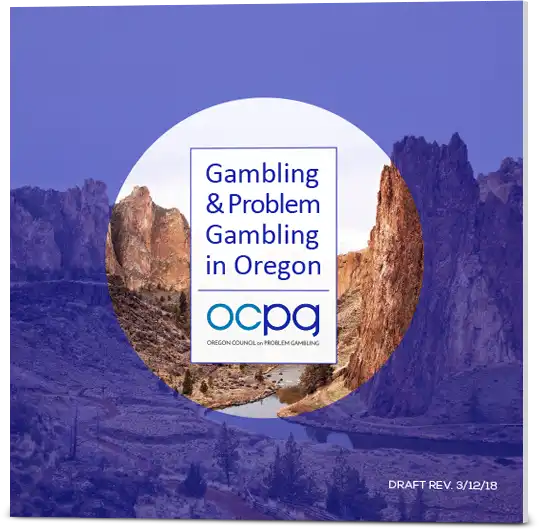Understanding Oregon's Gambling Landscape

Gambling in Oregon
Preventing Gambling Harm among Oregonians
The Oregon Council on Problem Gambling (OCPG), is committed to mitigating gambling-related harm as a public health approach, one that is grounded in unbiased, peer-reviewed research. Through the Oregon Gambling Research Center (OGRC), we support independent research that examines the systemic drivers of gambling harm, and informs policies that strengthen Oregon’s behavioral health systems. We prioritize research that is culturally relevant to communities and individuals most impacted.
OCPG is led by a small staff and a multidisciplinary advisory board. Our Executive Director and Research Director oversee daily operations, while our board includes individuals with lived experience, tribal representatives, behavioral health leaders, and gambling industry members.
Core Values
Mission & Principles
Our Mission
To promote the health of Oregonians through supporting efforts to minimize gambling-related harm.
Our Core Values
We bring together diverse partners and collaborators to work toward shared goals.
- Integrity – We are grounded in evidence, transparency, and public accountability.
- Equity – We promote culturally responsive practices that meet the needs of all Oregonians.
- Compassion – We recognize gambling disorder as a treatable condition and advocate for non-stigmatizing approaches.
Our Guiding Principles
We do not take a moral position on gambling. However, we believe that as long as the state sanctions and profits from gambling, it has a responsibility to minimize gambling-related harm and ensure that prevention and treatment services are accessible, evidence-based, and effective.
Strategic Goals
OCPG’s work is guided by long-term goals to:
Advance research to better understand gambling behaviors and impacts in Oregon.
Support prevention strategies that reduce risk across diverse populations.
Strengthen treatment systems by supporting workforce development and access to services.
Build capacity among service providers, researchers, and community organizations to respond to emerging needs.

The Council was founded in 1996 as the Oregon Gambling Addiction Treatment Foundation
Organizational History
Founded in 1996 as the Oregon Gambling Addiction Treatment Foundation, OCPG became a nonprofit 501(c)(3) to support treatment and prevention efforts statewide. We joined the National Council on Problem Gambling in 1998 and adopted our current name in 2008. Our founding members came from treatment agencies, public health, tribal gaming, the Oregon Lottery, and faith-based organizations.
The Council’s name changed to the Oregon Council on Problem Gambling in 2008

